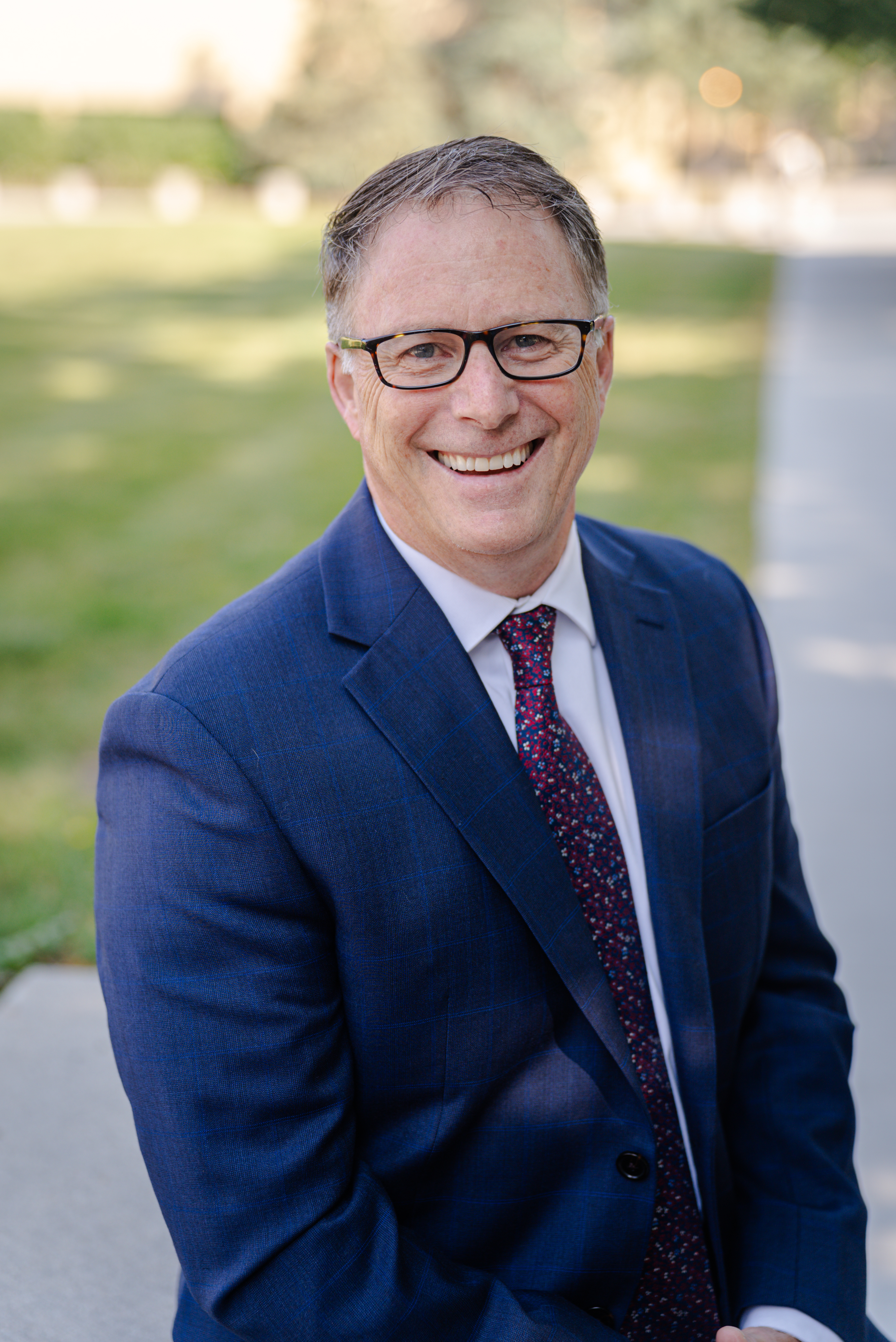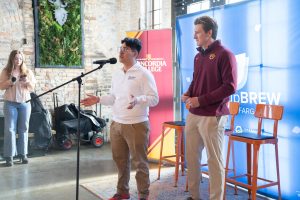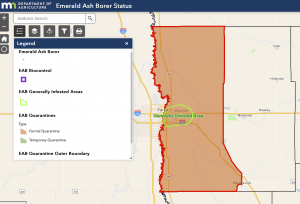In his first year as president of Concordia College, President Irvine has been guided by a simple but ambitious slogan: “Invest to Grow.” So far, his leadership journey has driven notable enrollment increases, the launch of new programs and an enhanced student experience.
The Office of the President is constantly active. It consists of Dr. Jill Abbot, Deputy to the President; Carrie Rogers, the Executive Assistant to the President; and President Irvine himself.
According to Rogers, Irvine holds between six to ten daily, sometimes more. To remain productive and efficient, they prioritize constant communication, maintain an organized Microsoft Teams chat, and share a commitment to OKRs (objectives and key results).

Irvine defines OKRs as “very specific, measurable objectives tied to big aspirations.”
In pursuance of meeting these goals, there are always challenges. Irvine divides them up into three categories: headwinds, crosswinds, and tailwinds.
Headwinds and tailwinds are on opposite ends of the metaphoric spectrum: headwinds are challenges that impede growth and tailwinds are conditions favorable for growth. Crosswinds refer to forces that can influence growth in different directions.
According to Irvine, his primary goal when he assumed office was to boost enrollment. However, there were several headwinds to this, including a steady decline in enrollment across Minnesota, negative perception college value and issues with affordability.
Over the past year, Irvine achieved this goal. The college has achieved a remarkable 28% increase in its first-year class.
This change has not gone unnoticed. Kai Kringlie, a sophomore and member of the tennis team, has noticed an “insane” change in the energy on campus. The enrollment change is visible in D.S., in between classes and at campus events, Kringlie said.
“President Irvine showed up to an alumni tennis event last year and ended up talking to my mom about new tennis courts and future plans for the program,” he said. “It was really nice to see how much support he has for us.”
Affordability is also a common issue among prospective college students and their families, which is why Irvine and collaborating staff developed the “Concordia Promise.”
A direct response to Minnesota’s existing “North Star Promise,” the Concordia Promise is tuition assistance program that will offer completely free tuition to students whose households have an adjusted gross income of under $90,000.
The program was created to address financial need, promote accessible education for students and improve enrollment.
According to Irvine, the addition of 22 new academic and co-curricular programs was also a part of Concordia’s commitment to boosting enrollment. These new additions were made possible through collaboration with faculty and the provost office.
“We want to give our students tools for internships, partnerships, service projects and more,” Irvine said. “We recognize that we needed a little change, but without changing who we are.”
Among the new programs are new majors, minors, certificates, and master’s degrees. One particularly popular addition has been the new Human Resources minor, Abbott said.
“I did an HR-related internship last summer, and I ended up really liking it. When I saw that we added an HR minor, it was an easy decision,” Olivia Feigum said, a senior healthcare administration major.
As Feigum approaches the conclusion of her fifth and final year at Concordia, she said this year feels different.
“It’s nice to see the expansion of academic programs, especially in healthcare,” she said, referring to the new public health minor. “I think underclassmen will have fun diving into these new opportunities.”
Irvine also emphasized the importance of ongoing investment in infrastructure. A major achievement in this area is the renovation of the turf and the track at Jake Christiansen Stadium, which is set to be fully completed and ready for use by homecoming weekend.
In May 2023, the Board of Regents met to address urgent athletic needs, specifically focusing on the track and the turf, Irvine said.
“The track was no longer suitable for competition, and we recognized the urgency of the situation,” he said.
Irvine praised the athletic and facilities departments for their heightened productivity and professionalism in expediting the project’s completion.
Looking ahead to his second year, Irvine’s vision remains steadfast. He aims to energize and excite campus through new opportunities, community engagement and an inspired culture of hard work and positivity.
He is gearing up for a comprehensive fundraising campaign set to launch in May 2025, with a goal of raising $200-225 million for continued momentum in terms of scholarships, infrastructure investment and new programs.
As he moves forward, Irvine plans on operationalizing the college’s three-tiered strategic plan that includes committing to financial growth, meeting enrollment goals and executing the school’s five measures of excellence. Each of these areas are centered on Concordia’s mission, momentum and moment.
“Our work is built around our mission, which will never change. To this moment we’re in – of challenge and promise – and to the momentum that we’re lucky to have realized,” Irvine said.
With a focus on growth, community engagement and student service, Irvine is set to continue positioning Concordia College for a promising future.










Be First to Comment